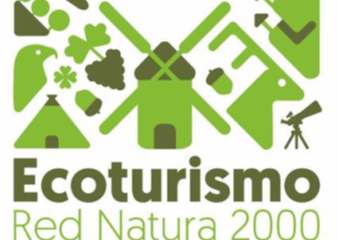Short quality trails in the Guttland region
Luxembourg
Introduction
A regional patchwork of hiking paths with differentiated qualities and different responsibilities for maintenance and marketing without professional guidance led to a lack of quality offers in the field of slow tourism activities on the area of two LEADER regions in western Luxembourg. The newly founded tourism office ‘Guttland’ aimed to change that situation based on the idea of a local association. With the help of LEADER, the ‘Guttland.Trails’ project has been implemented, creating a new high-quality offer in the niche of half-day circular tours, complementing the region’s portfolio. So far 8 trails have been labelled with more to follow. 2 paths were labelled with the new ‘Leading Quality Trails – Best of Europe, Daywalk’ label of the European Ramblers Association, which was introduced and tested during the project. A joint communication and management structure promotes the trails and takes care of maintenance, visitor guidance and information. With the support of the LEADER network, the tourism office managed to bring together all partners to select and rework the network of existing short hiking trails. The professionalization became possible because LEADER co-financed a project manager for the innovative project, which allowed skills and resources to be pooled at regional level.
Presentation of the project
The Guttland.Trails project is implemented in the Guttland region, surrounding the capital of Luxembourg towards the North-West. It presents a cooperation project between the 2 LEADER regions Atert-Wark and Lëtzebuerg West. ‘Guttland’ is Luxembourgish for ‘good land’, referring to the region’s high quality of soil for agricultural production. It is composed of a smooth cuesta landscape, resulting in many varied terrains providing potentials to promote nature-bound tourism activities. Despite this, the Guttland region was not well known among tourists for its hiking trails. Although there are many trails that were once marked by municipalities, they were not well maintained, visitor guidance could be improved, and marketing was close to non-existent as no actor felt responsible. The quality of the hiking trail network was not sufficient to satisfy the needs of inhabitants and tourists seeking leisure and deceleration, which presented a weakness in view of the relatively young tourism region’s specialisation on slow tourism. Between 2016 and 2018, a LEADER project ‘WestTrails’ analysed existing hiking paths and allowed stakeholders to gain experience from good practice projects in Europe, preparing the ground for the Guttland.Trails project. Since 2018, the Guttland.Trails project works on creating a new outdoor tourism offer to complement the region’s portfolio of activities in the field of slow tourism. A few criteria were important; the new offer had to capitalise the unique regional landscape while certifying the selected trails with a label. Due to the high share of tarmac roads in the region, necessary for agricultural activities, it was ineligible for the ‘Leading Quality Trails – Best of Europe’ label of the European Ramblers Association (ERA). In addition, neighbouring regions have certified trails of this type, risking entering into competition for tourists. Therefore, it was decided to strengthen the regional profile in short, but high[1]quality half-day tours. So far, 8 short circular walking trails have been labelled as ‘Guttland.Trails’, providing deceleration opportunities for ramblers. In addition, together with the ERA, the project developed the new ‘Leading Quality Trails – Best of Europe, Daywalk’ 1 label, leading to the certification of 2 Guttland.Trails in Europe. The project assures the continued high quality of the offer by improving the infrastructure and visitor guidance through a new logo (cf photos). It also managed to create an umbrella brand under which all trails are labelled and a joint marketing is undertaken. Information brochures and a website2 inform on the offer, providing all necessary information to start a tour.
Many paths are maintained by voluntary engagement of associations and the unclear responsibility between municipalities, state and other organisations required a cooperative project approach, which was well suited for LEADER. LEADER helped creating a new regional network with clear responsibilities between stakeholders. Through the co-funding of a project coordinator, LEADER allowed to successfully implement the bottom-up idea, valorising the regional hiking paths in an innovative way. Trails from the Guttland region that are located outside the LEADER territory were also incorporated, illustrating that it can bring benefits for non-LEADER municipalities.
Emblematic character of the project
LEADER promotes tourism activities in the Guttland region since several programming periods. By doing so, it contributed to the creation of the regional tourism association, acting as project bearer. Without LEADER, the professionalization of the regional tourism activities would not have taken place, underlining the leverage LEADER activities have. In addition, successful LEADER projects in the field of tourism have resulted in the region’s specialisation on slow tourism. The promotion of nature-bound activities, designed to provide opportunities for deceleration, presents a priority in the two participating region’s local development strategies, where the project was also integrated as project idea. The Guttland.Trails project illustrates one of the key advantages of LEADER; even though the region featured already a wealth of trails, the lack of efficient management resulted in the deterioration of the offers’ quality. Paths were marked and managed by municipalities, resulting in a patchwork of trails, differentiated types, qualities and a lack of communication and promotion activities. LEADER allowed successful navigation through the caveats of cooperation involving a broad range of partners, all acting in concert to develop the high-quality offer in the niche of short circular paths. The regional approach allowed bundling competences and resources, generating impacts beyond the LEADER regions. Involved stakeholders experienced a steep learning curve in participative methods and will be able to apply and share their knowledge in future. All LEADER regions with a similar stock of hiking trails and comparable potentials can implement comparable approaches. In addition, other LEADER regions can use the new ERA label ‘Leading Quality Trails – Best of Europe, Daywalk’ 3 , developed during the project. Regardless, the local context is important, as concerning the number of hiking paths, their quality, the existence and configuration of regional bodies, such as the project bearer in the field of tourism development.
Pictures
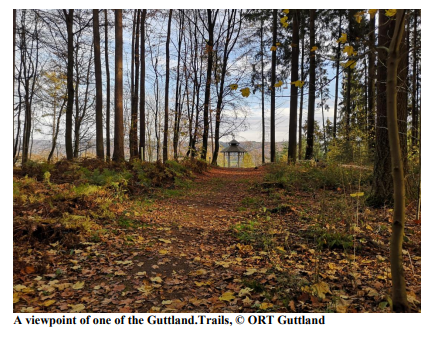
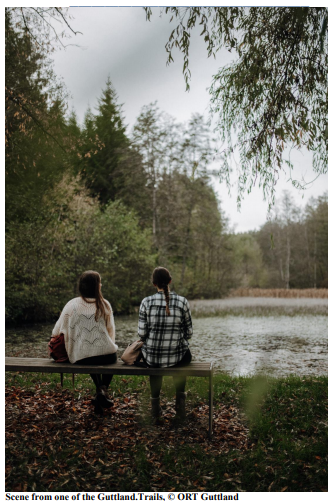
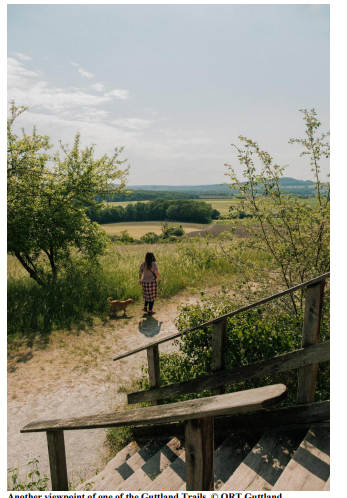
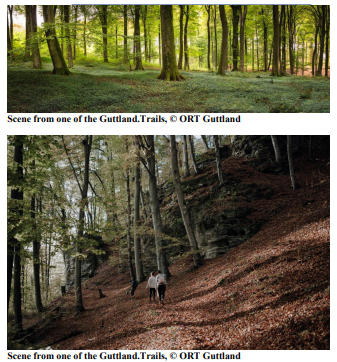
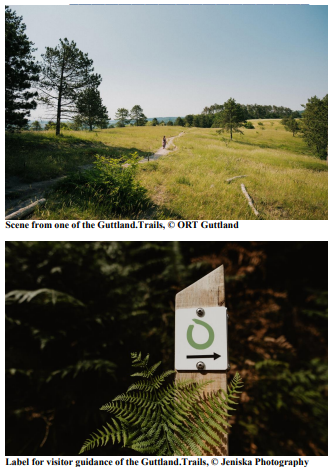


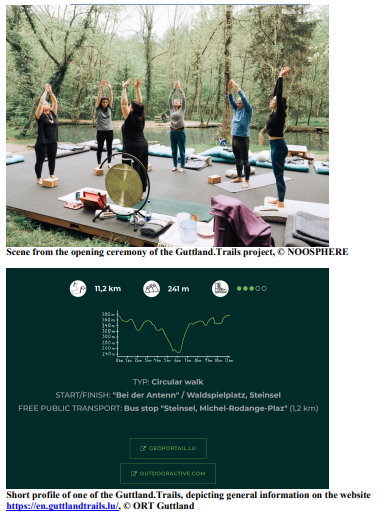
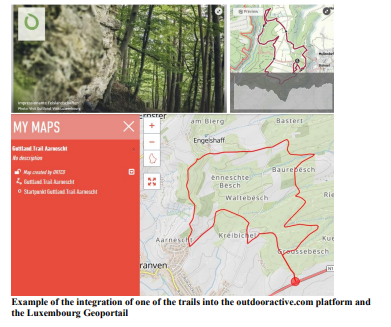
LEADER Atert-Wark region and LEADER Lëtzebuerg West region (interterritorial cooperation project between two luxembourgish LAGs)
Luxembourg

